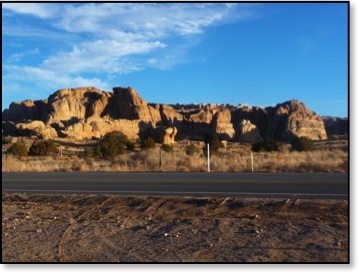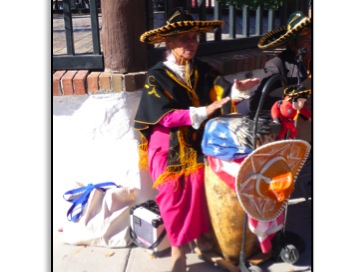
Acoma Pueblo (Meléndez 2010)
The Pasó Por Aquí Series on the Nuevomexicano Literary Heritage has been a part of the University of New Mexico Press for the past two decades. At the time of its founding, the early proponents of Pasó Por Aquí asked to share their knowledge of colonial New Mexico letters with The Recovering the U.S. Hispanic Literary Project, a grouping of scholars from universities across the United States engaged in recovering works of literature and history by Hispanics and published before 1960. The urgent need for scholars to pay specific attention to Hispanic New Mexico in recovery work soon became obvious. First, New Mexico’s massive archive of colonial texts in the form of chronicles, letters, military, administrative and ecclesiastical reports represented the largest collection of extant Spanish borderlands material available to recovery researchers. More importantly, these early writings were coupled with a vibrant expressive culture that was still being practiced in core areas of the Hispanic Southwest; thus, it was possible to make comparisons between archival material and surviving forms of art (balladry, story-telling, religious ritual, sermons, verse memorializing, dance and visual culture) in Chicano communities. The very name of the series is remarkable in its symbolic power. Derived from the short phrase Juan de Oñate chiseled into the sandstone walls of El Morro or Inscription Rock near Zuni, New Mexico in 1605, this textual artifact etched into the very earth of New Mexico has had the effect of making the presence of Hispanics in the Southwest permanent. It still signals an extraordinary range of symbolic associations borne of the interlocking of written text with historical acts and with the expressive culture that continues to emanate from this experience.

Músicos Plaza Mesilla, New Mexico (Meléndez 2010)
While the original goal of the series remains the recovery of the Hispanic literary heritage of greater New Mexico, we recognize that publishing new fiction and poetry is part of the project to preserve a literary tradition that is often thematically, linguistically, and certainly culturally interconnected. We also believe that scholarship in allied fields will give greater intellectual coherence to the series, such that we encourage the collection of photography, historical documents, religious artifacts and expressive culture in varied forms. The list of the books we have published (below) masterfully reflects the various aims of our work.

Oñate Inscription, El Morro, National Monument


